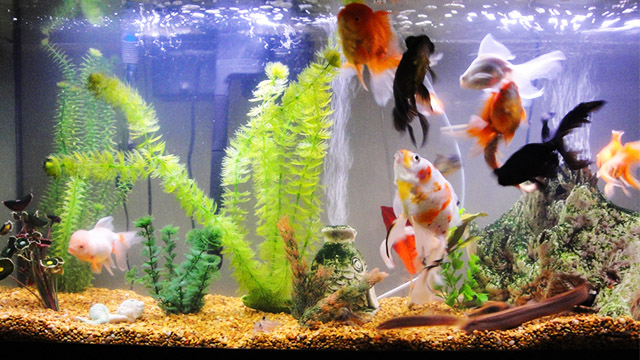Safely Move Fish To A New Fish Tank
In the article I’m going to tell you about the following subject – Safely Move Fish To A New Fish Tank. It will eventually happen one day. Like most people, you might have began the hobby with a smaller fish tank but as time went by, you would have introduced new fish, new decoration and new plants to a point where that old aquarium is just too crowded. It is then that you decide to buy a bigger fish tank and move fish into the new one. But you can’t just set up the new tank, move fish and expect them to live. They’ll probably last a couple of days before floating upside down on the surface of the water.

There are measures that need to be taken to safely move fish into a new fish tank. These measures involve preparing the fish for the transfer and ensuring that the environment of the new aquarium is as similar as possible to the old one. The main idea is to transfer the beneficial bacteria colonies to the new tank when you move fish.
Contents
Step #1: Before You Move Fish
You will be transferring the gravel, tank decoration, plants and move fish. So the first step is to vacuum large debris from the gravel and tank decoration. Then, test the pH and temperature of the water to have a record of the levels that you want to achieve in the new tank.
Step #2: Prepare Before You Move Fish
Since your new fish tank will probably be bigger, we’ll assume that you will be getting a new fish tank filter. Fill the tank to three quarters of its volume with water and run the new filter and heater for twenty four hours. Don’t put in the gravel and tank decoration yet because there might be chlorine in the water that will kill of the bacterial colonies on them.
If your existing filter is large enough and you plan to use it in the new fish tank, leave it running in your old fish tank first and if possible connect an air stone to it and run the air stone in the new fish tank.
Don’t think about reusing the old fish tank heater. You have to stabilize the temperature of your new aquarium by running the heater for a day so get a new one. Anyway, you could always keep the old heater as a spare in case the new one breaks down.
Step #3: Testing Before You Move Fish
After twenty four hours has gone by, test the fish tank pH and temperature of the new fish tank and ensure that it is similar to those of the old aquarium. It should not deviate more than two tenths of a pH level and a few degrees in temperature from the old fish tank. If it is, then leave it for another twelve hours or more until it has stabilized. Do not move fish until you have achieved the fish tank pH and temperature that you need to.
Step #4: Transfer The Gravel and Decoration
Use a clean scoop and move the gravel from the old tank to the new tank first. You could even use one of those disposable plastic cups to do this as long as it is clean. Once you have moved all the gravel, start arranging the decoration. Though you had vacuumed them yesterday, there might be debris on them so allow the debris to settle down before adding the fish.
Step #5: Transfer The Filter
It doesn’t matter if you’re using a new filter for the new tank or not, you will need to run the old filter in the new tank for a couple of weeks. This is because the existing filter media has had time to be populated by beneficial bacteria colonies and by running the old filter in the new tank, you will aide in the growth of bacteria colonies in the new filter media as well.
Step #6: Move Fish To The New Fish Tank
It’s time for the all important step. You should only move fish when you’re sure that the fish tank pH and temperature of the new tank matches that of the old tank. A good, stress free way to move fish is by using a net and a cup. Immerse the cup in the tank water and use the net to usher the fish into the cup. The gently pour the fish into the new tank.
By following all these steps to move fish you will not only give the fish the best possible opportunity to survive and live well in its new environment, but you will also prevent other unwanted occurrences such as cloudy water which new fish tanks are generally prone to.



